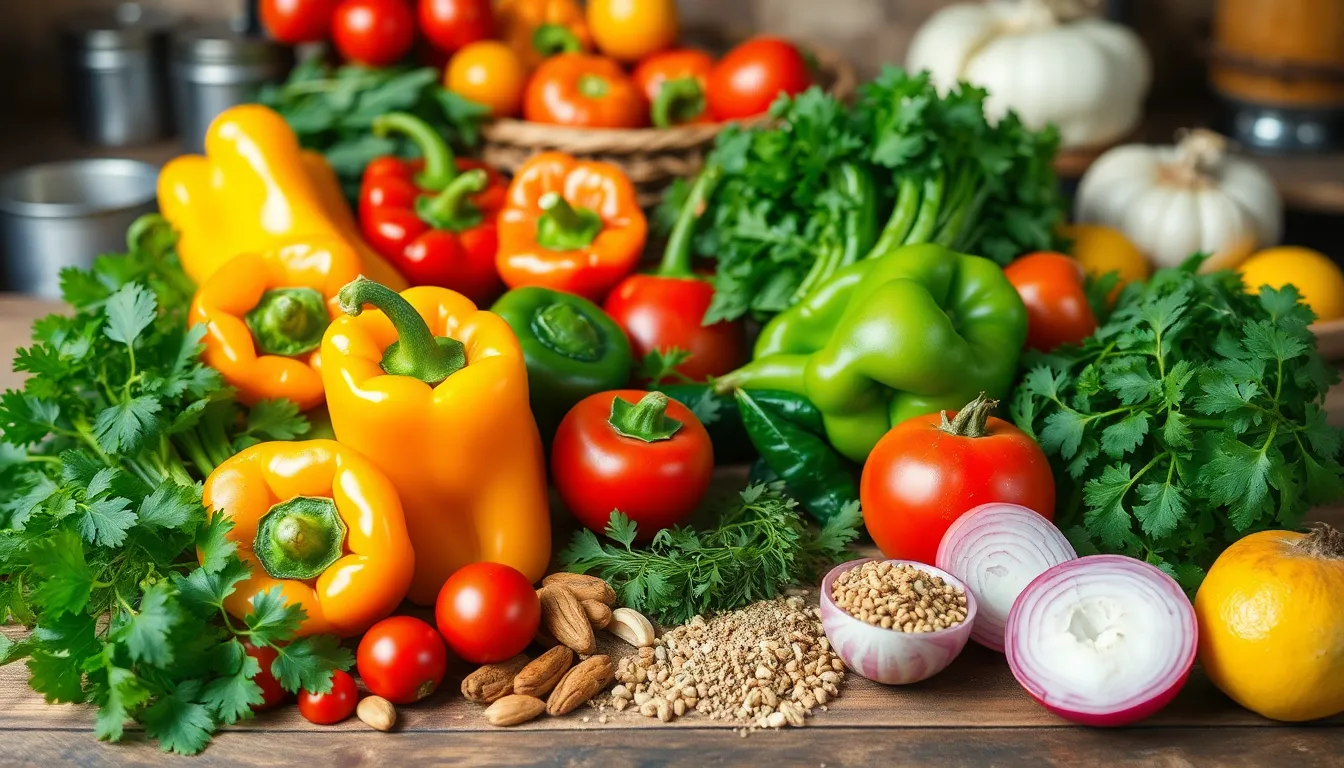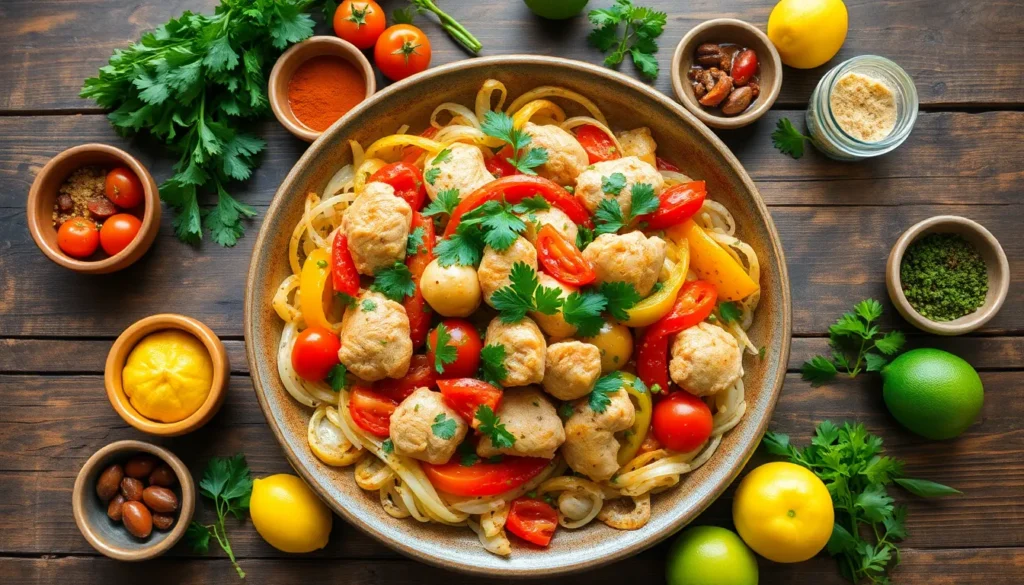Fostardu might sound like a secret spell from a wizard’s cookbook, but it’s actually a delightful dish waiting to steal the spotlight at your next meal. Imagine a dish so flavorful it could make even your most skeptical dinner guests reconsider their life choices. Cooking fostardu isn’t just about following a recipe; it’s an adventure that promises to tickle taste buds and leave everyone asking for seconds.
How To Cook Fostardu
Fostardu is a traditional dish known for its rich flavors and unique ingredients. Originating from specific regional cuisines, it showcases a blend of spices and cooking techniques that elevate ordinary meals. This dish often features a protein base, such as meat or fish, combined with vegetables and aromatic seasonings, creating a well-rounded experience.
In its preparation, fostardu captures the essence of home cooking. Cooks incorporate various herbs to enhance its fragrance and taste. Common herbs include cilantro, parsley, and mint, each adding a distinct flavor profile. Additionally, the use of regional spices, such as cumin or paprika, contributes warmth and complexity to the dish.
Fostardu stands out for its versatility. Different variations exist, catering to diverse dietary preferences and cultural influences. Vegetarians might opt for meatless versions, while seafood enthusiasts explore marine options. Each variation maintains the core spirit of fostardu while introducing new flavors.
Serving fostardu becomes a communal experience. Typically, the dish is shared among family and friends, fostering a sense of togetherness. Garnishing with fresh herbs or a splash of citrus zest enhances presentation, making it visually appealing for gatherings.
Overall, fostardu represents an adventurous culinary journey, encouraging exploration and creativity in the kitchen. Each bite promises an authentic taste of tradition, coupled with modern sensibilities.
Ingredients Needed

Gathering the right ingredients is essential for cooking fostardu. Key components enhance the dish’s unique flavor.
Main Ingredients
- Protein serves as the foundation. Select from options like chicken, beef, or fish to suit personal preferences.
- Fresh vegetables bring vitality. Use bell peppers, onions, or tomatoes to add color and texture.
- Aromatic herbs enhance the taste. Incorporate cilantro, parsley, and mint to create depth in flavor.
- Spices add warmth. Consider cumin or paprika for an authentic touch that elevates the dish.
Optional Ingredients
- Additional vegetables can enrich the dish. Carrots, zucchini, or spinach offer variety in taste and nutrition.
- Unique spices provide flavor diversity. Experiment with turmeric or cardamom for unexpected twists.
- Nuts add crunch. Almonds or pine nuts work well, emphasizing texture and richness.
- Fruits introduce freshness. Lemon or lime zest brings brightness, balancing the dish’s richness.
Cooking Techniques
Cooking fostardu involves specific techniques that enhance its rich flavors and ensure a satisfying experience. Proper preparation of ingredients and the right cooking methods play crucial roles in achieving the desired outcome.
Preparing the Ingredients
Freshness is vital when selecting ingredients for fostardu. Choose a quality protein base like chicken, beef, or fish. Rinse vegetables such as bell peppers, onions, and tomatoes to maintain their vibrant flavors. Aromatic herbs, including cilantro, parsley, and mint, require careful chopping to release their essential oils. Measure spices like cumin and paprika accurately to ensure balanced seasoning. Optional additions like carrots, zucchini, or spinach can elevate the dish further. Consider adding nuts or fruits for enhanced textures and flavors. Organizing ingredients ahead streamlines the cooking process, making for an efficient culinary experience.
Cooking Methods
Several cooking methods can bring fostardu to life. Sautéing ingredients in a pan over medium heat allows their natural flavors to blend, enhancing the overall taste. Braising meat can create tender, juicy results, especially when combined with a flavorful broth or sauce. Baking in an oven offers even cooking, perfect for integrating spices and herbs effectively. Steaming vegetables retains their nutrients, providing a healthy contrast to the protein. Grilling imparts a smoky flavor, appealing to those who enjoy a charred finish. The method chosen directly impacts the dish’s depth and complexity, showcasing the versatility of fostardu.
Step-by-Step Guide
Cooking fostardu involves a few structured steps that enhance its rich flavors. Each step contributes to crafting a dish that captures the essence of home cooking.
Step 1: Preparation
Start by gathering all necessary ingredients. A protein base like chicken, beef, or fish forms the essence of fostardu. Fresh vegetables such as bell peppers, onions, and tomatoes provide texture. Incorporate aromatic herbs like cilantro, parsley, and mint for depth. Measure out spices, focusing on cumin and paprika for authentic flavor. Rinse all vegetables thoroughly to remove impurities. Optionally, include carrots, zucchini, or spinach for additional nutrition. Create a well-organized workspace to streamline the cooking process.
Step 2: Cooking
Heat a suitable pan over medium-high heat. Add a small amount of oil, allowing it to warm before adding the protein. Cook until browned, ensuring even cooking throughout. Next, introduce chopped vegetables, stirring until they soften. Gradually mix in the spices, releasing their fragrances. For moisture, pour in a bit of water or broth to simmer the ingredients. Allow the mixture to cook until flavors meld, usually around 20-30 minutes, depending on protein type. Experiment with different cooking methods, including grilling or baking, to achieve the desired texture.
Step 3: Serving
Transfer the cooked fostardu to a serving platter. Garnish generously with fresh herbs or citrus zest for visual appeal. Serve hot, encouraging a communal dining experience. Pair the dish with rice, flatbreads, or salads to balance flavors. Sharing fostardu enhances the meal’s enjoyment, making it a memorable occasion. Encourage guests to savor each bite, highlighting the complexity of the dish. Consider serving alongside a refreshing beverage to complement the robust flavors.
Common Variations
Fostardu adapts well to various flavors and ingredients. One popular variation features seafood, incorporating shrimp, fish, or mussels, which adds a coastal essence. Many enjoy a vegetarian version using tofu or beans as protein sources, allowing for a hearty meatless dish. Including different vegetables, such as eggplant or squash, enhances the natural flavors and adds texture.
Spice choices can also shift depending on regional preferences. For those seeking a bit more heat, options like chili powder or cayenne pepper may be added for a kick. Alternatively, opting for milder spices, such as coriander, creates a subtler flavor profile.
Nuts and fruits play a significant role in some variations. Adding toasted almonds or walnuts brings crunch and richness. Incorporating fruits like dried apricots or raisins introduces a touch of sweetness to balance the savory elements.
Additionally, cooking methods can alter the dish’s profile. In some recipes, grilling provides a smoky flavor, while braising results in tender, succulent ingredients. Ultimately, these variations showcase the versatility of fostardu, making it suitable for diverse palates and occasions.
Many regions boast their own traditional takes on fostardu, each contributing unique ingredients and techniques. Exploring these adaptations offers a deeper connection to culinary heritage and invites creativity in the kitchen. Each variation invites cooks to personalize their dish, resulting in a truly unique experience at the table.
Tradition with Personal Creativity
Cooking fostardu is an exciting journey that blends tradition with personal creativity. This dish not only showcases rich flavors but also invites cooks to explore various ingredients and techniques. Whether one opts for a classic meat version or a vibrant vegetarian alternative, the possibilities are endless.
Sharing fostardu with family and friends enhances the experience, making it a centerpiece for communal gatherings. With its aromatic herbs and spices, fostardu brings warmth and connection to the table. Embracing this culinary adventure will surely leave a lasting impression on those fortunate enough to enjoy it.


More Stories
How Material Innovation Is Influencing Contemporary Design Objects
How Automation and Smart Tools Are Transforming Architectural Practice
Why Turnkey Sweepstakes Software Is Catching On Fast